-
 Bitcoin
Bitcoin $109,459.7682
2.44% -
 Ethereum
Ethereum $2,598.6052
6.29% -
 Tether USDt
Tether USDt $1.0003
0.00% -
 XRP
XRP $2.2734
3.95% -
 BNB
BNB $661.4886
1.58% -
 Solana
Solana $155.4825
4.35% -
 USDC
USDC $0.9999
-0.02% -
 TRON
TRON $0.2838
1.04% -
 Dogecoin
Dogecoin $0.1740
8.25% -
 Cardano
Cardano $0.6047
9.04% -
 Hyperliquid
Hyperliquid $40.2302
6.50% -
 Sui
Sui $2.9863
10.05% -
 Bitcoin Cash
Bitcoin Cash $509.5786
0.60% -
 Chainlink
Chainlink $13.8156
6.03% -
 UNUS SED LEO
UNUS SED LEO $9.0142
0.69% -
 Avalanche
Avalanche $19.0337
8.68% -
 Stellar
Stellar $0.2438
5.17% -
 Toncoin
Toncoin $2.9012
3.59% -
 Shiba Inu
Shiba Inu $0.0...01210
6.20% -
 Litecoin
Litecoin $90.0882
7.05% -
 Hedera
Hedera $0.1597
8.53% -
 Monero
Monero $326.3340
2.88% -
 Polkadot
Polkadot $3.6365
9.32% -
 Bitget Token
Bitget Token $4.6162
2.72% -
 Dai
Dai $1.0001
0.00% -
 Ethena USDe
Ethena USDe $1.0002
-0.01% -
 Uniswap
Uniswap $7.6403
10.47% -
 Pepe
Pepe $0.0...01060
12.03% -
 Aave
Aave $281.3664
7.56% -
 Pi
Pi $0.4992
1.76%
What is a ZK-STARK?
ZK-STARKs enable private, scalable blockchain transactions without trusted setup, using advanced math for secure, quantum-resistant verification.
Jul 03, 2025 at 04:08 pm
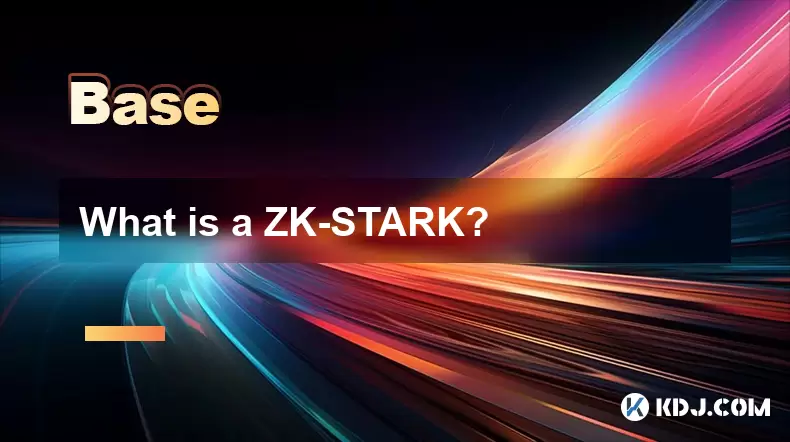
Understanding the Basics of ZK-STARK
A ZK-STARK (Zero-Knowledge Scalable Transparent Argument of Knowledge) is a type of cryptographic proof system that enables one party to prove to another that they know a value or solution without revealing the actual data. It belongs to the family of zero-knowledge proofs, which are widely used in blockchain and cryptocurrency systems to enhance privacy and scalability.
What makes ZK-STARKs unique is their ability to operate without requiring a trusted setup phase, unlike their counterpart ZK-SNARKs (Zero-Knowledge Succinct Non-Interactive Argument of Knowledge). This means that there’s no need for an initial set of parameters that must be kept secret, making ZK-STARKs more resistant to potential vulnerabilities associated with setup ceremonies.
How ZK-STARK Works Under the Hood
At its core, ZK-STARK relies on advanced mathematical constructs such as polynomial interpolation and error-correcting codes. The prover encodes the computation into a polynomial and then evaluates it at various points. The verifier checks these evaluations without knowing the original input, thus preserving privacy.
The process involves converting a computational problem into an algebraic format called an Arithmetic Intermediate Representation (AIR). This representation allows the system to break down complex computations into manageable constraints that can be verified efficiently.
Next, the system creates a Merkle tree of the trace of computation and uses this structure to generate commitments. These commitments are then used to construct low-degree polynomials that represent the execution trace and transition constraints.
Key Differences Between ZK-STARK and ZK-SNARK
One major distinction between ZK-STARK and ZK-SNARK lies in the trusted setup requirement. While ZK-SNARKs depend on a secure multi-party computation ceremony to generate initial parameters, ZK-STARKs eliminate this step entirely by relying only on hash functions and collision-resistant primitives.
Another difference is scalability. ZK-STARKs have better asymptotic efficiency in terms of proving and verification time, especially for large computations. Although the proof size in ZK-STARKs tends to be larger than in ZK-SNARKs, this trade-off is often acceptable given the increased security and transparency.
Furthermore, ZK-STARKs are considered more future-proof against quantum computing threats due to their reliance on hash-based cryptography rather than elliptic curve pairings used in ZK-SNARKs.
Use Cases of ZK-STARK in Cryptocurrency
In the world of blockchain and decentralized finance (DeFi), ZK-STARKs are increasingly being adopted for layer 2 scaling solutions. One prominent example is StarkWare, which develops technologies like StarkEx and StarkNet, both utilizing ZK-STARK proofs to enable high-throughput transactions while maintaining data integrity and privacy.
These systems allow off-chain computation to be verified on-chain using succinct proofs, significantly reducing gas costs and increasing throughput. For instance, dApps can batch multiple transactions into a single proof, which is then submitted to Ethereum for validation.
Additionally, ZK-STARKs are employed in private token transfers, where users want to obscure transaction details from public ledgers while still ensuring validity. Projects like Aztec Network explore hybrid models combining ZK-SNARKs and ZK-STARKs to balance performance and privacy.
Implementing ZK-STARK: A Step-by-Step Overview
If you're interested in implementing ZK-STARKs, here's a simplified breakdown of the steps involved:
- Define the Computation: Start by identifying the specific logic or function you want to prove. This could be verifying a hash preimage, checking a Merkle proof, or validating a smart contract execution.
- Create an AIR: Convert the computation into an Arithmetic Intermediate Representation. This involves writing out the execution trace and defining the constraints that each step must satisfy.
- Construct Polynomials: Use interpolation techniques to build polynomials that encode the execution trace and constraint checks. These polynomials will later be evaluated during the proof generation phase.
- Commit to Trace and Constraints: Generate Merkle roots for the trace and constraint polynomials. This allows the prover to commit to the values without revealing them directly.
- Fiat-Shamir Heuristic: Apply the Fiat-Shamir transformation to make the protocol non-interactive. This involves generating random challenges based on the previous messages in the protocol.
- Generate Proof: Combine all components—trace, constraints, randomness—to create the final ZK-STARK proof. This proof can now be sent to the verifier.
- Verify the Proof: The verifier checks the proof using the public inputs and the committed values. If everything aligns mathematically, the proof is accepted; otherwise, it’s rejected.
Each step requires precise handling of cryptographic primitives and mathematical transformations to ensure correctness and soundness.
Challenges and Considerations When Using ZK-STARK
Despite their advantages, ZK-STARKs come with several technical and practical challenges. One of the primary concerns is the computational overhead required to generate proofs. While verification is fast, creating the proof can be resource-intensive, especially for large computations.
Storage and bandwidth also become considerations due to the relatively large proof sizes compared to ZK-SNARKs. This can impact the efficiency of on-chain verification and increase gas costs when submitting proofs to blockchains like Ethereum.
Moreover, the complexity of understanding and implementing ZK-STARKs poses a barrier to entry for developers. Mastery of abstract algebra, finite field arithmetic, and formal verification techniques is essential for building robust and secure implementations.
Lastly, integrating ZK-STARKs into existing blockchain infrastructures often requires significant architectural changes. Developers must carefully consider how these proofs interact with smart contracts, consensus mechanisms, and data availability layers.
Frequently Asked Questions About ZK-STARK
Q1: Can ZK-STARKs be used outside of blockchain?
Yes, although they are most commonly associated with blockchain and cryptocurrency, ZK-STARKs can be applied in any scenario requiring verifiable computation and privacy preservation, such as secure cloud computing and confidential machine learning.
Q2: Are ZK-STARKs quantum-resistant?
Compared to ZK-SNARKs, ZK-STARKs are considered more resilient against quantum attacks because they rely on symmetric cryptography and hash functions, which are believed to be harder to break using quantum algorithms.
Q3: How do ZK-STARKs affect transaction speed on layer 2 solutions?
By batching multiple transactions into a single proof, ZK-STARKs reduce the amount of data that needs to be processed on-chain. This results in faster finality and lower fees for end-users interacting with layer 2 platforms.
Q4: Is it possible to audit a ZK-STARK proof?
While the inner workings of a ZK-STARK proof are mathematically complex, tools and libraries such as ethSTARK and Winterfell provide open-source frameworks for auditing and verifying proofs in a transparent manner.
Disclaimer:info@kdj.com
The information provided is not trading advice. kdj.com does not assume any responsibility for any investments made based on the information provided in this article. Cryptocurrencies are highly volatile and it is highly recommended that you invest with caution after thorough research!
If you believe that the content used on this website infringes your copyright, please contact us immediately (info@kdj.com) and we will delete it promptly.
- ZKasino's $30M Rug Pull: Founder Arrested in UAE – Justice Served?
- 2025-07-04 00:30:13
- Bitcoin's Bull Run: Standard Chartered and the ETF Inflow Effect
- 2025-07-04 00:30:13
- Bitcoin Price Swings, Short Squeezes, and Political Plays: What's Next?
- 2025-07-04 00:35:12
- PEPE Price Surges Amid Golden Cross: Memecoin Market Heats Up!
- 2025-07-03 23:10:15
- Cooking.City Launches on Solana: A Recipe for On-Chain Success?
- 2025-07-03 23:10:15
- Meme Coins, PENGU, and Investment: Riding the Crypto Wave
- 2025-07-03 23:50:12
Related knowledge

What is open interest in derivatives?
Jul 03,2025 at 02:49pm
Understanding Open Interest in DerivativesOpen interest is a critical metric used in the cryptocurrency derivatives market, particularly when analyzing futures and options contracts. It represents the total number of outstanding contracts that have not been settled or closed by either party involved. Unlike trading volume, which counts all trades made i...
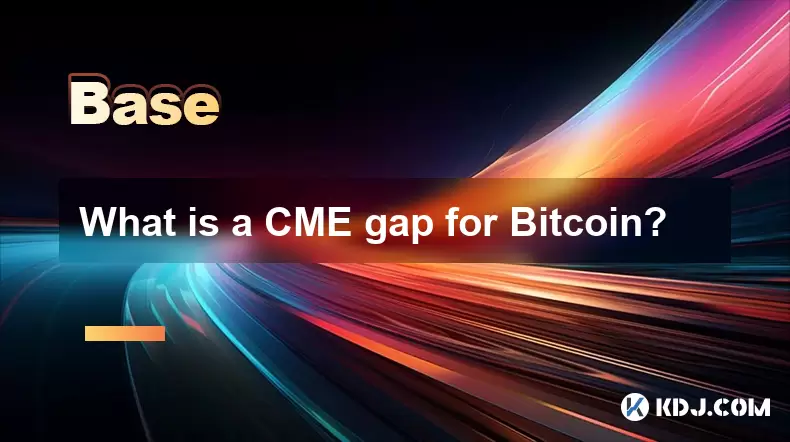
What is a CME gap for Bitcoin?
Jul 03,2025 at 05:49pm
Understanding the Concept of a CME GapA CME gap refers to a discrepancy in price between the closing price of Bitcoin on the Chicago Mercantile Exchange (CME) and its opening price when trading resumes. This phenomenon occurs because the CME operates during specific hours, typically aligned with traditional market hours, while cryptocurrency markets ope...
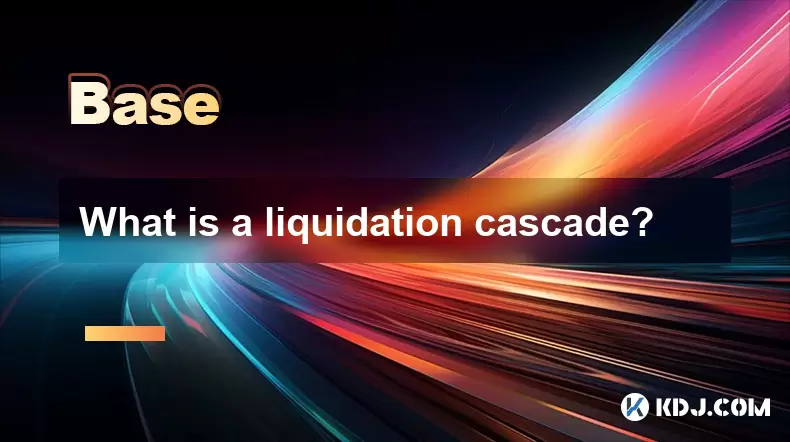
What is a liquidation cascade?
Jul 03,2025 at 07:15am
Understanding the Concept of LiquidationIn the realm of cryptocurrency trading, liquidation refers to the process by which a trader's position is automatically closed due to insufficient funds to maintain the leveraged trade. This typically occurs when the market moves against the trader's position and their account equity falls below the required maint...
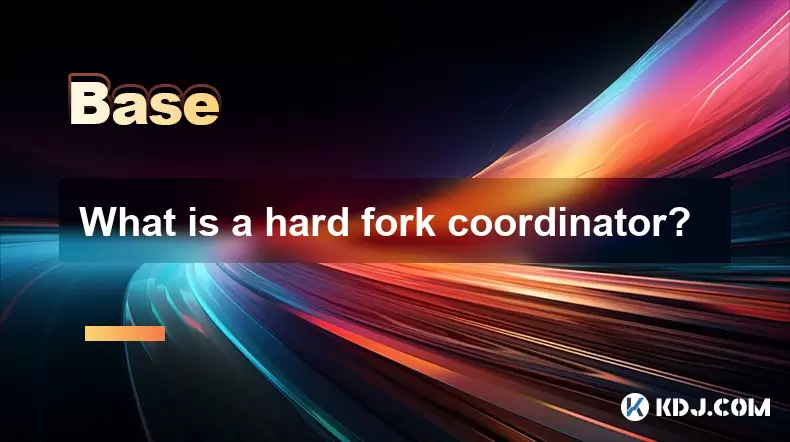
What is a hard fork coordinator?
Jul 03,2025 at 12:42pm
Understanding the Role of a Hard Fork CoordinatorIn the world of blockchain and cryptocurrencies, a hard fork coordinator plays a critical role during major network upgrades. A hard fork is a significant change to a blockchain’s protocol that makes previously invalid blocks or transactions valid (or vice versa). This type of upgrade requires all nodes o...
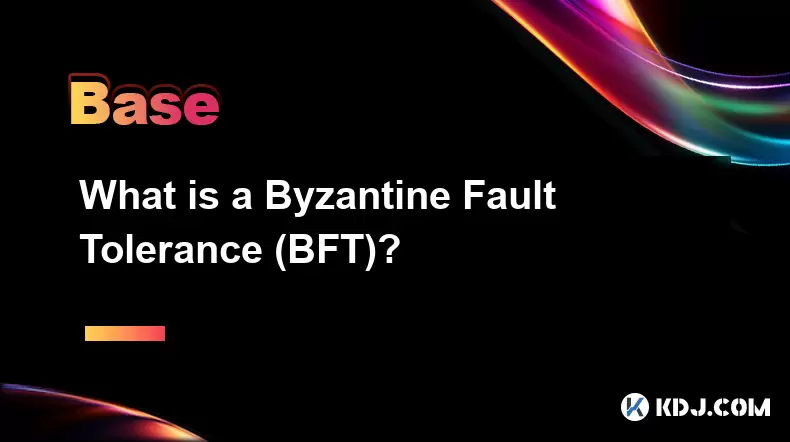
What is a Byzantine Fault Tolerance (BFT)?
Jul 03,2025 at 11:49am
Understanding the Concept of Byzantine Fault ToleranceByzantine Fault Tolerance (BFT) is a critical concept in distributed systems, particularly within the realm of blockchain technology and cryptocurrencies. It refers to the ability of a system to continue functioning correctly even when some components fail or behave maliciously. The term originates f...
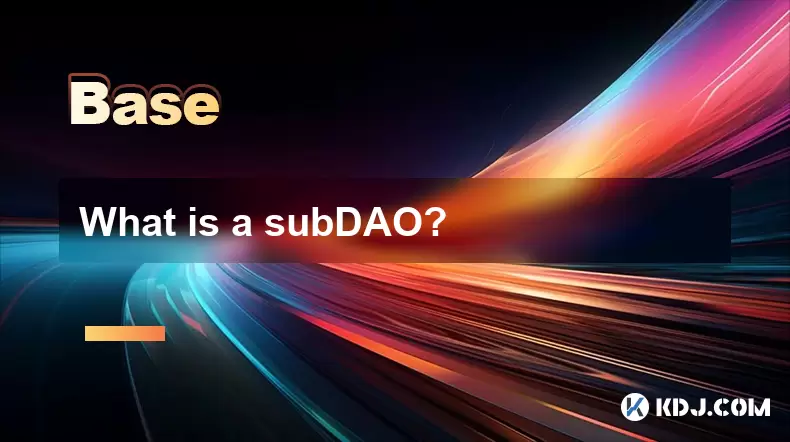
What is a subDAO?
Jul 03,2025 at 09:36am
Understanding the Concept of SubDAOA SubDAO, short for Sub-Decentralized Autonomous Organization, is a specialized entity that operates under the umbrella of a larger DAO (Decentralized Autonomous Organization). It functions with its own set of rules, governance mechanisms, and tokenomics while remaining aligned with the overarching goals of the parent ...

What is open interest in derivatives?
Jul 03,2025 at 02:49pm
Understanding Open Interest in DerivativesOpen interest is a critical metric used in the cryptocurrency derivatives market, particularly when analyzing futures and options contracts. It represents the total number of outstanding contracts that have not been settled or closed by either party involved. Unlike trading volume, which counts all trades made i...

What is a CME gap for Bitcoin?
Jul 03,2025 at 05:49pm
Understanding the Concept of a CME GapA CME gap refers to a discrepancy in price between the closing price of Bitcoin on the Chicago Mercantile Exchange (CME) and its opening price when trading resumes. This phenomenon occurs because the CME operates during specific hours, typically aligned with traditional market hours, while cryptocurrency markets ope...

What is a liquidation cascade?
Jul 03,2025 at 07:15am
Understanding the Concept of LiquidationIn the realm of cryptocurrency trading, liquidation refers to the process by which a trader's position is automatically closed due to insufficient funds to maintain the leveraged trade. This typically occurs when the market moves against the trader's position and their account equity falls below the required maint...

What is a hard fork coordinator?
Jul 03,2025 at 12:42pm
Understanding the Role of a Hard Fork CoordinatorIn the world of blockchain and cryptocurrencies, a hard fork coordinator plays a critical role during major network upgrades. A hard fork is a significant change to a blockchain’s protocol that makes previously invalid blocks or transactions valid (or vice versa). This type of upgrade requires all nodes o...

What is a Byzantine Fault Tolerance (BFT)?
Jul 03,2025 at 11:49am
Understanding the Concept of Byzantine Fault ToleranceByzantine Fault Tolerance (BFT) is a critical concept in distributed systems, particularly within the realm of blockchain technology and cryptocurrencies. It refers to the ability of a system to continue functioning correctly even when some components fail or behave maliciously. The term originates f...

What is a subDAO?
Jul 03,2025 at 09:36am
Understanding the Concept of SubDAOA SubDAO, short for Sub-Decentralized Autonomous Organization, is a specialized entity that operates under the umbrella of a larger DAO (Decentralized Autonomous Organization). It functions with its own set of rules, governance mechanisms, and tokenomics while remaining aligned with the overarching goals of the parent ...
See all articles

























































































